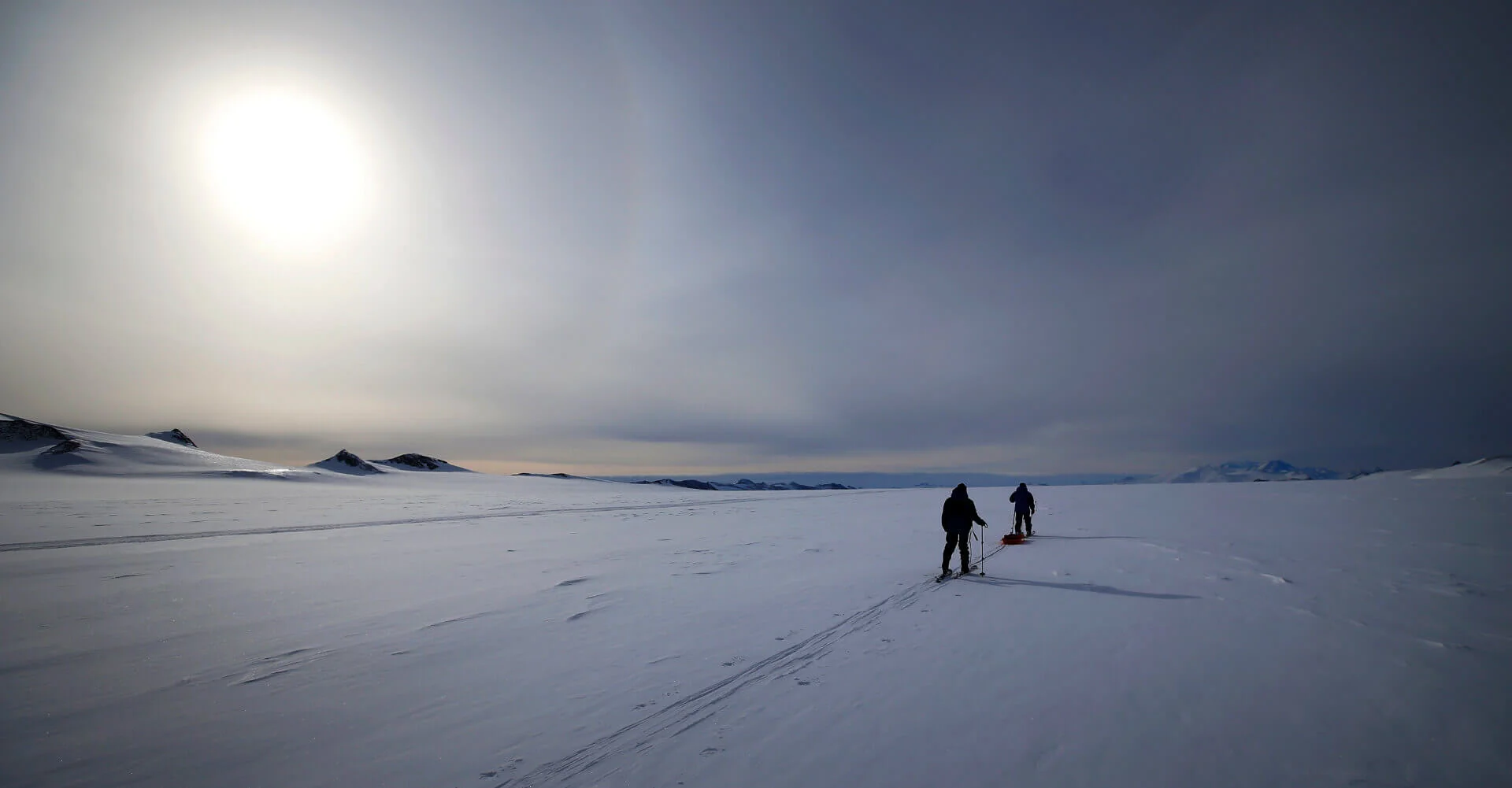
Chile has been present in Antarctica for 80 years, taking on a commitment to conservation, science, peace, the future and the planet.
In this natural laboratory for climate change, where great wonders of nature lie hidden, we keep creating future, studying its secrets and working with those who, like us, are seeking the answers to big questions.
Chile is an original signatory and has been a consultative member of the Antarctic Treaty since 1959.
Since 1947, Chile has maintained bases in different areas of Antarctica.
There are currently 12.
Chilean scientists who study Antarctica at the Chilean Antarctic Institute’s (INACH) bases train at Torres del Paine National Park. This is because the similar conditions in the park make it easier for them to adapt to Antarctica’s extreme climate. These same extreme characteristics are what make the Antarctic territory such an interesting and important place for scientific research.
Two Chilean scientists are studying the characteristics of microorganisms known as extremophiles. Looking at how they live in conditions of extreme cold and radiation could provide interesting results for science. We know little about these life forms, which have managed to adapt to the harsh conditions and this is why Antarctic biodiversity is such an interesting area of scientific research.
Working in gloves is difficult. Moving around with three layers of thermal clothing poses an even greater challenge, but that is how scientists working in Antarctica withstand temperatures as low as -35°C. The work Chilean scientists are doing here teaches us more about events like the separation of the South American mainland from Antarctica, a process critical to understanding certain characteristics of our present and future.
Airplanes ski too. At least the ones that fly in Antarctica do! The characteristics of the white continent are such that these planes must land in short distances and on skis. Airplanes are essential to the work scientists do in Antarctica, where they are seeking answers for phenomena like global warming year after year.
Getting to and around in Antarctica is no easy task. Hercules aircraft, trucks and snowmobiles are crucial for transporting the scientists conducting research here. Support from the three branches of the Chilean armed forces and the Chilean Antarctic Institute makes this research possible.
Chile has proposed the creation of a marine protected area on the Antarctic Peninsula that would cover over 670,000 square kilometers.
22 countries use the Magallanes Region as a port of entry to Antarctica.
We configured a 3,000 km axis, between Punta Arenas and Union Glacier, with strategic and scientific capacities that allow us to develop Antarctic science.
108 Scientific projects 350 Chilean researchers 148 International researchers





